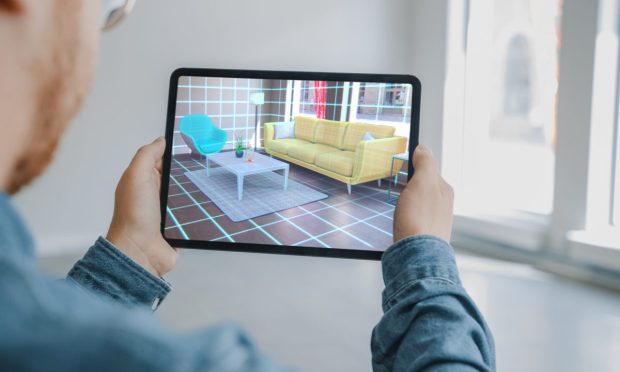Snapchat Says Social Commerce Reliant on Augmented Reality

Even as changes to Apple’s iOS privacy rules introduce new challenges for advertisers, brands and social media companies, Snapchat executives are hoping that it can still successfully provide shopping experiences within the photo-sharing app.
CEO Evan Spiegel told analysts on a conference call that the company is “doubling down” on expanding augmented reality (AR)-powered shopping experiences that allow consumers to try on clothing, beauty products and accessories from Ralph Lauren, MAC Cosmetics and Zenni Optical, among others.
“Augmented reality is one of our most exciting long-term opportunities because it is simultaneously very early in its technological development and already used by hundreds of millions of people,” Spiegel said, noting that more than 200 million people engage with AR on Snapchat every day.
Jeremi Gorman, chief business officer at Snapchat, said Ulta Beauty leveraged AR to bring a makeup try-on experience to Snatchat users, which drove a 4.5 times higher return on ad spend compared to other advertising techniques and delivered a “huge uplift … because Snapchatters can visualize what they look like wearing different products.”
Related: Snap Beefs Up Social Commerce With New AR Tools
Snapchat said it currently has 306 million daily active users, up 23% year-over-year and the fourth consecutive quarter of at least 20% growth. Executives said the photo-sharing app reaches more than 75% of people between 13 and 34 years old in the U.S., Canada, France, the U.K., Australia and the Netherlands.
PYMNTS’ “Bring-It-To-Me Economy” research, conducted in collaboration with Carat from Fiserv, found that 95% of Generation Z shoppers and 93% of millennials buy retail items online, with about three-quarters of each cohort doing so more now than prior to March 2020.
To help brands take advantage of AR, Gorman said Snapchat is providing a backend platform to create, manage and deploy AR assets through its acquisition of Vertebrae, offering 3-D asset creation as a service for businesses looking to activate immersive shopping experiences.
“We believe that camera and augmented reality represents our most exciting long-term revenue opportunity, particularly as brands start to build always-on AR strategies for their business,” Gorman said.
Social Shopping
Nearly every social media platform has put at least some of its eggs in the social commerce basket, trying to essentially become storefronts where users can discover and buy products without leaving the app or website.
In the U.S., social commerce is expected to exceed $36 billion this year, though that’s one-tenth of the social commerce sales projected in China. Over 14% of retail eCommerce sales in China come from social channels, according to eMarketer, compared to just 5% in the U.S.
See also: Commerce Is Fast Becoming the New Battleground for Social Media Giants
Alfred Chang, co-CEO of PacSun, told PYMNTS in a recent interview that growing the retailer’s social media presence has been a key strategy to attracting its core Gen Z customer base, particularly during the pandemic when most consumers were stuck at home. The company has hosted about a half-dozen livestreams on TikTok so far.
“We’ve been able to launch exclusive products, experiences hosted by influencers, talking about the product,” he said. “We know that this consumer loves social media engagement, and … that’s what makes livestreaming so compelling now. It allows them to engage at a level beyond just comments on our posts or stories.”
Read more: Retailers Turn to Crypto, Social Commerce to Tap Gen Z Shoppers
